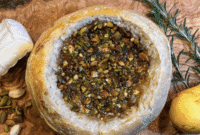Summer’s heat can sizzle, and with so much time together, so can emotions! Discover fun, practical ways to keep kids cool during scorching days and savvy tips for parents to help little ones—and themselves—stay calm when tempers flare. Dive into our guide for a refreshing, stress-free summer!
1. Sprinkler Dance Party
Transform your backyard into a lively, cooling oasis by setting up a sprinkler (or multiple sprinklers for bigger spaces) and pairing it with your favorite summer playlist. Kids can run, jump, or dance through the spraying water, getting soaked and cooled off while burning energy. To enhance safety, place the sprinkler on a flat, non-slippery surface like grass, and ensure adults supervise to prevent falls.

Creative Twists
Themed Dance Party
Choose a theme like “Under the Sea” or “Jungle Adventure.” Kids can wear costumes (e.g., mermaid tails or animal masks made from lightweight, water-safe materials) and dance to themed music (like ocean sounds or jungle beats). Add props like inflatable beach balls or pool noodles for extra fun.
Glow-in-the-Dark Evening Party
If daytime heat is too intense, host the party in the early evening with glow-in-the-dark accessories like neon bracelets or LED sprinklers (available online). Use a portable speaker with colorful lights to sync with the music for a magical vibe.
Choreography Challenge
For older kids, create a simple dance routine to a favorite song. Families can record short videos of their sprinkler dance moves and share them with relatives for a virtual dance-off, adding a competitive yet fun element.
Personalize it for your Family
Let each family member pick a song for the playlist to reflect their tastes, creating a mix that ranges from pop hits to silly nursery rhymes. Families can also craft a DIY sprinkler by poking holes in a recycled plastic bottle or hose, customizing the water patterns to suit their space. For a unique touch, name the event after the family (e.g., “The Smiths’ Splash Bash”) and make it an annual summer tradition.
2. DIY Ice Pop Creations
Making homemade ice pops is a refreshing and engaging way to cool off, doubling as a creative kitchen activity. Use molds (silicone or plastic, available at most stores) and fill them with kid-friendly ingredients like fruit juice, pureed fresh fruits (e.g., strawberries, mangoes), yogurt, or even coconut water for hydration. Involve kids in blending, pouring, and mixing to make it hands-on. Freeze for 4–6 hours, then enjoy the icy treats outside or in a shaded area. This activity is ideal for kids aged 3 and up, with adult supervision for younger ones handling tools like blenders.
Creative Twists
Layered Rainbow Pops
Create multicolored ice pops by layering different juices or purees (e.g., orange juice, kiwi puree, blueberry yogurt). Freeze each layer for 30 minutes before adding the next to keep them distinct. Kids can name their creations, like “Sunset Swirl” or “Rainbow Rocket.”
Surprise-Inside Pops
Hide small edible surprises in the pops, like gummy candies, chocolate chips, or tiny fruit chunks. For a healthy twist, use edible flowers (like pansies) or herbs (like mint) for a fancy look. Kids will love discovering the “treasure” as they eat.
Ice Pop Art Gallery
Before freezing, let kids decorate the molds with food-safe markers or add natural food coloring to create swirls. After unmolding, display the pops on a tray for a pretend “ice pop art show” where everyone votes on the most creative design.
Personalization Ideas
Have each child invent their own ice pop “recipe” and name it after themselves or a favorite character (e.g., “Emma’s Mango Magic” or “Paw Patrol Pop”). Families can create a recipe book to record their favorite combinations, adding drawings or photos of the pops. For a cultural twist, incorporate flavors from family heritage, like tamarind or hibiscus for Latin American-inspired pops or lychee for Asian-inspired ones.
3. Water Balloon Piñata
Turn water balloons into a splashy, cooling game by filling small, biodegradable water balloons with water and hanging them from a sturdy tree branch, clothesline, or pergola using string. Kids take turns swinging a soft bat (like a foam pool noodle or plastic toy bat) to burst the balloons, getting delightfully drenched in the process. Set up in an open outdoor area free of sharp objects, and have a bucket of extra balloons ready for multiple rounds. This is best for kids aged 4 and up, with adults ensuring safe swinging and cleaning up balloon pieces afterward.
Click here for a good post with tips on how to set up a water balloon piñata for your kids.
Creative Twists
Color Splash Game
Fill balloons with water tinted with a few drops of food coloring (use washable, non-toxic types). Assign points to different colors (e.g., red = 5 points, blue = 10 points) and keep score as kids burst them, turning it into a friendly competition. Ensure clothes are washable or old to avoid stains.
Obstacle Course Piñata
Combine the piñata with a mini obstacle course—kids must crawl under a rope, hop over cones, or spin in a circle before swinging at the balloons. This adds excitement and extends the activity for high-energy kids.
Story-Based Adventure
Frame the game as a quest, like “defeating the heat monster” by bursting its “water orbs.” Kids can dress up as superheroes or knights, and parents can narrate the story as they play, making it immersive and imaginative.
Personalization Ideas
Let kids decorate the balloons before filling them using washable markers to draw faces, patterns, or names. Families can create a “piñata wall” by hanging balloons in a pattern (like a heart or star) that reflects a family symbol or celebration (e.g., a birthday or summer kickoff). For a eco-friendly twist, use reusable water bombs (fabric or silicone) that can be refilled, personalizing them with fabric paint for a family keepsake.
1. Practice “Balloon Breathing” to Calm Down
Help kids benefit from the practice of slow, deep breathing by imagining they’re inflating a balloon with each inhale and deflating it with each exhale. Instruct them to breathe in through the nose for 4 seconds, hold for 2 seconds, and exhale through the mouth for 6 seconds. Make it fun by pretending their belly is the balloon expanding and shrinking.
Deep breathing activates the parasympathetic nervous system, which promotes relaxation by reducing heart rate and cortisol levels. A 2018 study in Frontiers in Psychology found that diaphragmatic breathing reduces stress and anxiety in children by lowering physiological arousal. This technique helps regulate the body’s stress response, calming the amygdala, the brain’s emotional center.
Balloon breathing gives kids a simple, portable tool to manage overwhelming emotions. It’s engaging for young children because it involves imagination, and it can be done anywhere, from a playground to a bedroom, helping them regain control during emotional spikes.
2. Create a “Calm Corner” for Emotional Retreat

Set up a designated quiet space in the home, like a cozy corner with pillows, blankets, stuffed animals, or calming sensory items (e.g., fidget toys, soft music). Encourage kids to visit this space when they feel overwhelmed to self-soothe and process emotions before re-engaging.
Research from the Journal of Child Psychology and Psychiatry (2017) shows that providing a safe, sensory-rich environment helps children with anxiety self-regulate by reducing sensory overload and fostering a sense of security. This aligns with the concept of “sensory modulation,” where calming environments help balance emotional arousal.
A calm corner offers a physical space for kids to retreat without judgment, empowering them to take charge of their emotions. It’s especially effective for younger kids who may not yet have the verbal skills to express their feelings, giving them a safe haven to reset.
3. Validate Emotions with Reflective Listening
When a child is upset, it can help to acknowledge their feelings with phrases like, “I see you’re really frustrated because your toy broke,” or “It’s okay to feel sad about this.” Reflect their emotions back to them without immediately trying to fix the problem, showing you understand their experience. This video above, by Therapy in a Nutshell, is very helpful in understanding how to do Reflective Listening.
A 2020 study in Child Development found that validating children’s emotions enhances emotional regulation by fostering a sense of being understood, which reduces emotional intensity. This practice strengthens the prefrontal cortex’s role in emotional regulation, helping kids process feelings more effectively over time.
Validation builds trust and emotional security, helping kids feel heard rather than dismissed. It teaches them to name and understand their emotions, which is a critical skill for long-term emotional resilience, and it prevents escalation by de-escalating intense feelings in the moment.
Disclaimer: This content was automatically imported from a third-party source via RSS feed. The original source is: https://www.superhealthykids.com/6-tips-for-cooling-off-and-cooling-down-when-things-heat-up-this-summer/. xn--babytilbehr-pgb.com does not claim ownership of this content. All rights remain with the original publisher.




